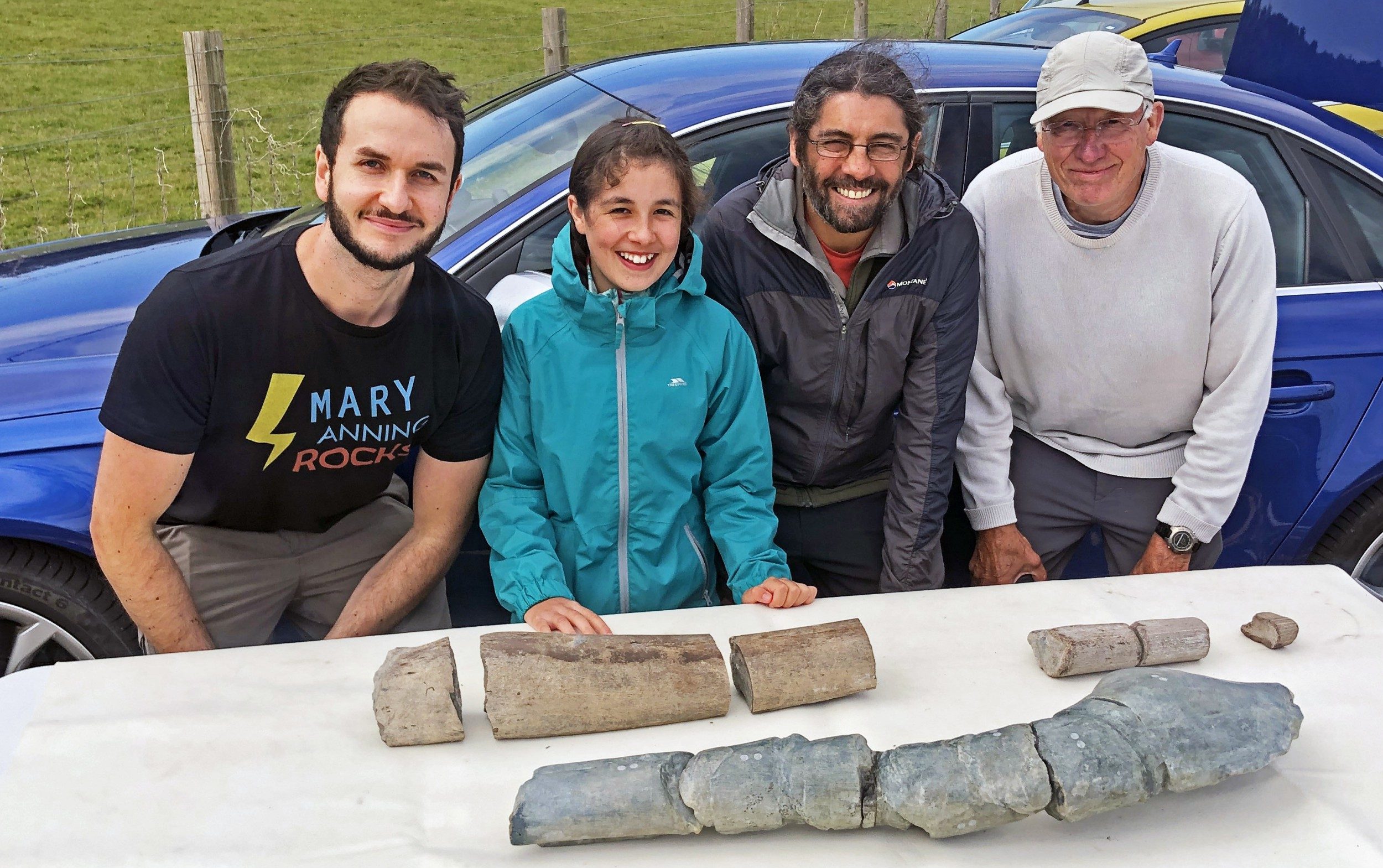By: Ellie Zhang
Justin and Ruby Reynolds, a father and daughter duo, were walking along the beach in the United Kingdom when a rock stood out from the others. Ruby, then 11 years old, saw that it wasn’t a rock at all and was actually a piece of a giant fossilized bone.
With bone in hand, the two searched the Somerset beach for other pieces, realizing they had stumbled upon something “significant,” according to an April 17 news release from the University of Manchester, published by EurekAlert.
The Reynolds’ took the bone fragments to Dean Lomax, a paleontologist at the University of Manchester. Lomax immediately noted the similarities between the bones Ruby and Justin had found and pieces of prehistoric jawbone discovered in 2016 further along the coast by a fossil collector named Paul de la Salle, according to the university.
“I was amazed by the find. In 2018, my team (including Paul de la Salle) studied and described Paul’s giant jawbone and we had hoped that one day another would come to light,” Lomax said in the release. “This new specimen is more complete, better preserved, and shows that we now have two of these giant bones — called a surangular – that have a unique shape and structure. I became very excited, to say the least.”
Lomax enlisted the help of de la Salle and the Reynolds, along with some family members, to go back to the beach and look for more pieces.
“Over time, the team found additional pieces of the same jaw which fit together perfectly, like a multimillion-year-old jigsaw,” the university said.
The fossil findings will soon be displayed at the Bristol Museum and Art Gallery. It’s also possible that those in the U.S. could view a replica of the giant bones.
In Orlando, Florida, the Dinosaurs Will Always Be Awesome (DWABA) museum is printing a 3D replica of the giant bones to display for its outreach programs.











